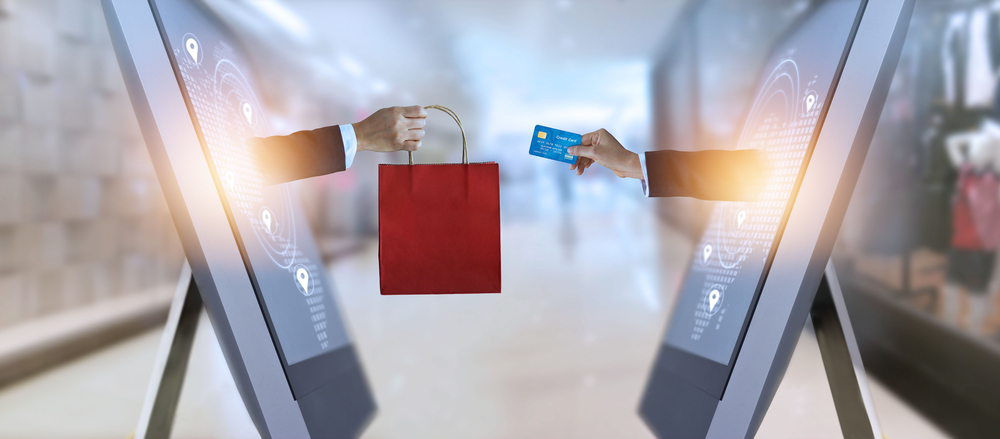The future of e-commerce and its impact on marketing strategies
- On : January 27, 2023
The future of e-commerce is extremely promising as more and more consumers are preferring online shopping to meet their needs. In 2020 only 17.8% of sales were generated globally from online purchases which is expected to increase to 20.8% in 2023. The growth of e-commerce market share is expected to remain unabated and reach 23% by 2025 which indicates a sharp hike of 5.2% in just a five-year span between 2020-2025.
With the advent of new technologies and especially the increasing use of mobile devices, e-commerce is becoming more convenient, accessible, and personalized for consumers. This has significant implications for future marketing strategies and the way businesses approach e-commerce.
Let’s explore the future of e-commerce on marketing strategies :
Artificial Intelligence
One of the biggest changes in e-commerce is the incorporation of artificial intelligence and machine learning to personalize the shopping experience for consumers. Artificial intelligence has not only reduced the cost of remarketing for organizations but also made it more convenient. AI can identify the behavioral pattern of every customer based on most viewed and most purchased items; this data is used later to send push notifications for attracting customers again to the website which includes personalized product recommendations. By using these technologies, businesses can better understand the change of preferences of their customers, resulting in more effective marketing campaigns.
Social media e-commerce marketing
In addition to personalization, social media is becoming an extremely crucial part of the e-commerce industry. Social media platforms like Facebook, Instagram, and TikTok are increasingly being used to drive sales and promote products. For example, in-app shopping features of Facebook are used by 450 million people for purchasing and selling products. Instagram shopping has 130 million monthly users and 70% of purchasers use Instagram to seek suggestions about their potential purchase. Businesses can use these platforms to connect with customers, share product information, and reinforce brand awareness.
Influencer marketing is also becoming increasingly popular with the number of social media influencers increasing day by day. Therefore, businesses should collaborate with social media influencers to help market their products and services, improving sales.
Mobile = e-commerce
Another key trend in e-commerce is the rise of mobile commerce. At present 87.2% of mobile commerce sales are from smartphones and according to Insider Intelligence $534.18 billion ecommerce sales will be from smartphones by 2024. As more and more consumers turn to their smartphones and tablets to shop online businesses need to ensure that their e-commerce sites are mobile-friendly and optimized for small screens. This includes designing sites as navigation friendly and incorporating features of quick loading to provide a seamless shopping experience.
Virtual reality and Augmented reality
Another important aspect of e-commerce is the use of virtual reality and augmented reality to enhance the shopping experience. These technologies allow customers to interact with products in a more immersive and engaging way, making it easier to visualize products and understand their features and benefits. For example, while purchasing any product from online platforms customers can rotate the image of the product to visualize it from different angles. This can be particularly useful for businesses selling products such as furniture, home decor, and clothing, which can be difficult to envision in a virtual setting.
Subscription-based model
Another trend that is shaping the future of e-commerce is the use of subscription-based models. Subscription services, such as Birchbox, Dollar Shave Club, and Netflix, allow businesses to build a steady stream of revenue by charging customers on a recurring basis. According to Forbes, the subscription e-commerce market size is expected to reach $904.2 billion i n 2026 from $120.04 billion in 2022. This highlights how a subscription-based model can be a great way to increase customer loyalty and retention while providing a predictable revenue stream.
Location-based marketing
As more and more businesses are turning to e-commerce to reach customers, they are also using technology to target customers in specific geographic locations. Platforms like Google Maps and Yelp make it easy for businesses to promote their products and services to local customers, and businesses can also use location-based data to personalize the shopping experience for customers. If e-commerce apps incorporate location-based marketing, it can entice customers with different coupons and offers of nearby shopping centers helping businesses reach more customers in their local area.
By staying ahead of the curve and embracing these trends, businesses can capitalize on the growing opportunities in e-commerce and be innovative while increasing their revenue.


